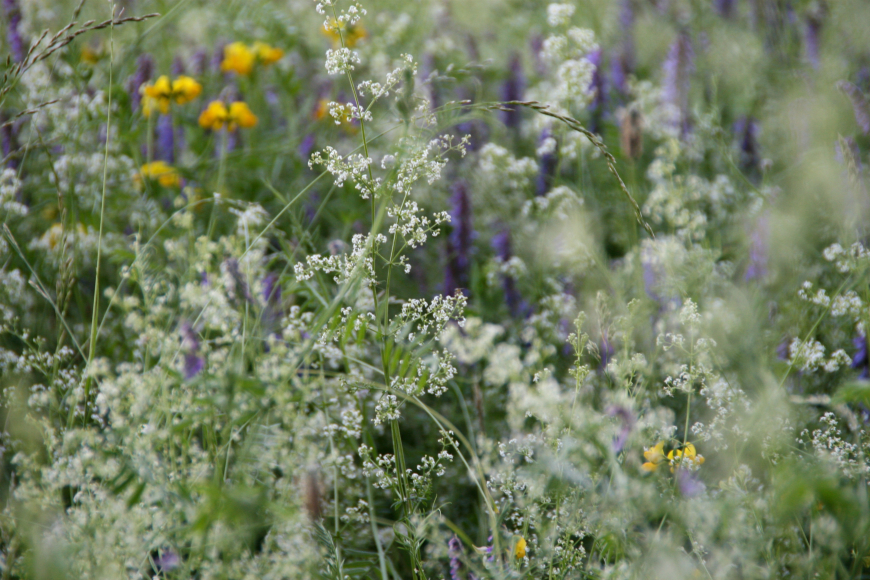Foraging for Fulfillment: Wild Strawberries
I initially approached foraging wild strawberries the way I approached my first foraging experiences with daylily tubers and garlic mustard and plantain weed. Find, pick, cook, and write. This strategy worked quite well with common flowers and weeds; they were abundant, easy to find and to collect. I could also quickly gather enough for a dish; five minutes picking garlic mustard leaves and I had a heaping jar of pesto.
Wild strawberries, however, are a very different beast, and they warrant different treatment.
Foraging for wild edibles has lots of very practical benefits. Wild plants are nutritional powerhouses, packed full of vitamins and antioxidants and fiber. Foraging is free, helping to lower grocery bills. But it’s also a grounding process, a way to more meaningfully connect with natural surroundings. It forces me to look, really look, at the ground. It forces me to notice the changing seasons. And then there’s the simple joy of wandering around a field, which I doubt any of us does enough of.
I have no tricks and tips, no plant lineage, and no recipe to share when it comes to wild strawberries. I just have a piece of advice: go find a patch, eat as many as you can get your berry-stained hands on, and spend some time getting to know the world around you.
On my search for wild strawberries I got to know the St. Lawrence campus, a place I’ve inhabited for the last four years. I met Kealey Peale, a St. Lawrence Biology student, for a morning bird-box run this past week, which involves cruising around campus and checking on just a few of the department’s many bird boxes. Kealey is helping to track the building of nests and the hatching of chicks this summer. On this particular morning we found two new in-progress nests, counted the eggs of a bluebird, and found some stage three chicks, nearly ready to fly.
As I was pointing out plantain weed and garlic mustard to Kealey, I realized with not a little abject horror that even though I had spent the last four years living here, I had never really looked at the plants before. I had never distinguished between birds (they all flew, right?), or differentiated between trees, or even noticed that there were over a hundred bird boxes set up around campus.
I guess you can be somewhere in body without being present. I seem to be quite good at it.
But foraging for wild edibles is starting to give me a presence in the North Country.
After checking in on the last two bird boxes, we headed over to the field next to the St. Lawrence Athletic center, sandwiched between the football field and the canoe shack. This is where, on a former bird box expedition, Kealey and his professor had stumbled across a patch of wild strawberries. The tall grass and wildflowers obscured most everything, but eventually, we caught crimson flashes of color peeking out from within the green and yellow tangle.
I had never seen or picked wild strawberries before. Though I anticipated they would be small, these strawberries seemed positively miniscule. Instantly, my grand plans for a strawberry salad and rhubarb-strawberry popsicles evaporated. There was no way I could harvest enough to make anything past a single, red-spotted muffin.
Kealey promptly sat down among the grass as I continued to stand, peering down at the itsy-bitsy berries. “They’re delicious!” he proclaimed. That sealed the deal.
We spent the next thirty minutes crawling through the field, carefully plucking strawberries from the underbrush to be transported directly to our mouths. The berries were tart, and a little sweet, and so unlike any strawberry I’d eaten before. I pushed my face down towards the ground, legs itching from weeds, sweating under the hot June sun. I lost track of time, and responsibilities, and everything else on my quest for the next…little…berry.
I think I might know that field better than any other place I’ve been in the North Country. And I can’t wait for raspberry and blackberry season!












The fulfillment you describe extends into the realm of words as well, as demonstrated by the North Country’s own award-winning poet Maurice Kenny and this famed work of his:
Wild Strawberry
For Helene
And I rode the Greyhound down to Brooklyn
where I sit now eating woody strawberries
grown on the backs of Mexican farmers
imported from the fields of their hands
juices without color or sweetness
my wild blood berries of spring meadows
sucked by June bees and protected by hawks
have stained my face and honeyed
my tongue…healed the sorrow in my flesh
vines crawl across the grassy floor
of the north, scatter to the world
seeking the light of the sun and innocent
tap of rain to feed the roots
and bud small white flowers that in June
will burst fruit and announce spring
when wolf will drop winter fur
and wrens will break the egg
my blood, blood berries that brought laughter
and the ache in the stooped back that vied
with dandelions for the plucking,
and the wins nourished our youth and herald
iris, corn and summer melon
we fought bluebirds for the seeds
armed against garter snakes, field mice;
won the battle with the burning sun
which blinded our eyes and froze our hands
to the vines and the earth where knees knelt
and we laughed in the morning dew like worms
and grubs; we scented age and wisdom
my mother wrapped the wounds of the world
with a sassafras poultice and we ate
wild berries with their juices running
down the roofs of our mouths and our joy
I sat here in Brooklyn eating Mexican
berries which I did not pick, nor do
I know the hands which did, nor their stories…
January snow falls, listen…
Thank you so much for sharing this beautiful poem, Joaquin – it really resonates!